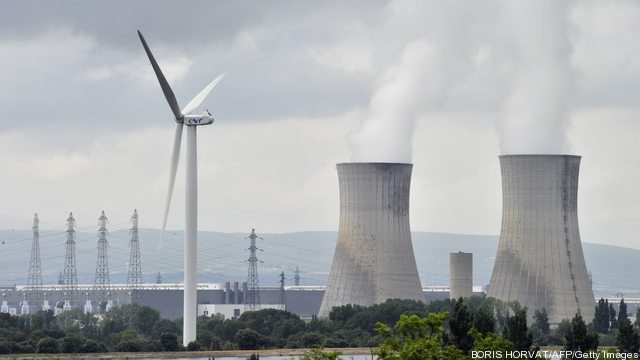Republican Mayor Kevin Faulconer is facing one of the biggest decisions in his more than four years as head of the city of San Diego — whether to approve a government-run alternative to San Diego Gas & Electric
San Diego Gas Electric
Renewable Energy Update: October 2018 #2
By William R. Devine, Barry Epstein & Renée Louise Robin | Allen MatkinsSign up and get Breaking Energy news in your inbox.
We will never sell or share your information without your consent. See our privacy policy.CPUC passes controversial mandate for 1.3 gigawatts of batteries, grid storage by 2020 California’s status as the vanguard in pushing energy storage technologies onto the power grid is now official. On Thursday, the California Public Utilities Commission unanimously approved its proposed mandate (PDF) that will require the state’s big three investor-owned utilities to add 1.3… Keep reading →
California Proposes Framework For Energy Storage Procurement Program
By Energy Solutions ForumCPUC has proposed policies and mechanisms for its landmark energy storage procurement program that sets a 1,325 MW energy storage mandate. On September 3, 2013, the California Public Utilities Commission (CPUC) issued a proposed decision detailing policies and mechanisms for its energy storage procurement program established under the 2010 Assembly Bill 2514, the first… Keep reading →

California regulators will direct the state’s largest utilities to return 85% of cap-and-trade proceeds to ratepayers. The move, which comes about a month after the successful completion of California’s first carbon allowance auction, aims at offsetting higher electricity costs resulting from the cap-and-trade program, by providing a “climate dividend” on utility bills.
On December 20, 1012, the California Public Utilities Commission (CPUC) unanimously approved a plan to distribute the utility sector’s carbon allowance revenues to ratepayers in the form of a biennial “climate dividend.” The plan directs three major investor-owned utilities – Pacific Gas & Electric, Southern California Edison, and San Diego Gas & Electric – to return 85% of proceeds from the sale of carbon allowances to ratepayers as rebates through the life of the cap-and-trade program. The dividend, estimated to range from $20 to $40, will appear as an automatic credit on utility bills every six months starting July 2013. The amount of money that will go to ratepayers in the form of rebates from 2013 through 2020 ranges from $5.7 billion to $22.6 billion. Keep reading →

Collaboration between utilities and third party software developers will be crucial in the implementation of the smart grid, bringing innovation to large energy suppliers and reliable customers for data firms.
Large utility companies need to embrace “big data analytics” to better understand the “health of our assets,” Karen Austin, the senior price president and chief information officer at Pacific Gas and Electric, said. Keep reading →

State Renewable Portfolio Standards may come under increasing pressure amid low natural gas prices, excess power generation capacity and the cost of compliance, leading energy analyst says.
“The world for renewables today is quite different from the renewables world we faced over the last several years,” Ron Norman, renewable energy specialist at PA Consulting Group, told a symposium held in San Francisco last week. “Before 2009, we had extraordinarily high gas prices and pending C02 legislation, low growth throughout the US and since that time we’ve had a crash in natural gas prices.” Keep reading →

What if? What if mechanical failure at a single point would automatically and instantaneously communicate to nearby nodes that a shutdown was necessary to prevent a truly widespread blackout?
If that were possible, power outages like the September 8, 15-hour blackout that affected an estimated 5 million customers, from southern California and Arizona to northern Mexico, and which may have incurred as much as $100 million in economic costs, would be completely avoidable. Keep reading →



